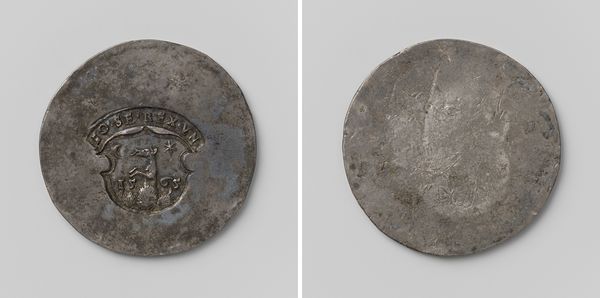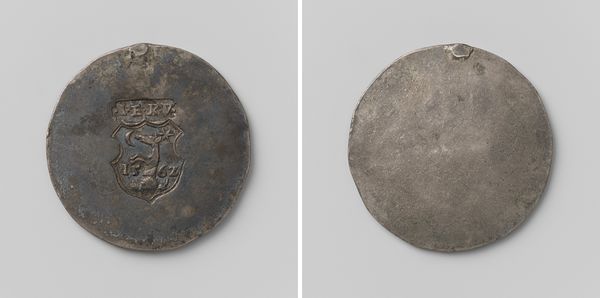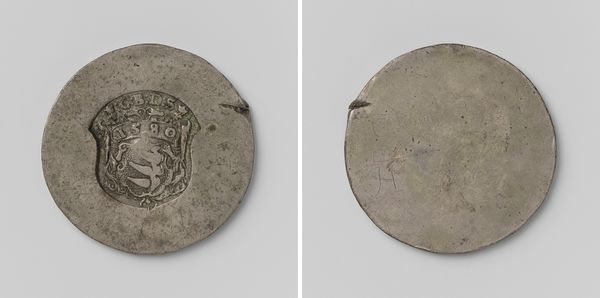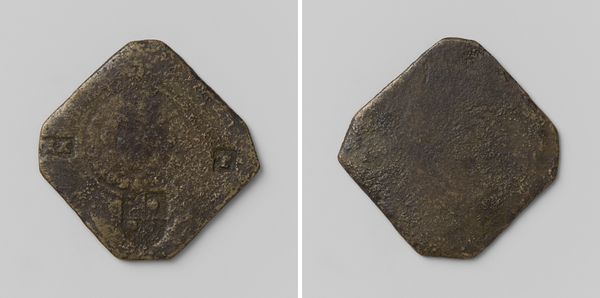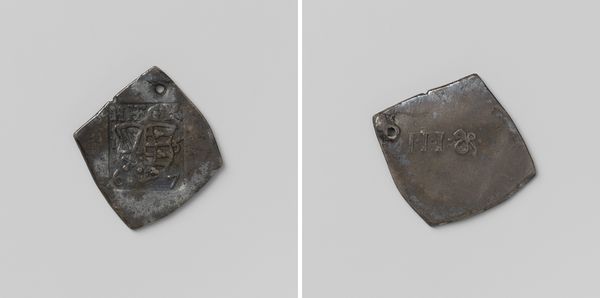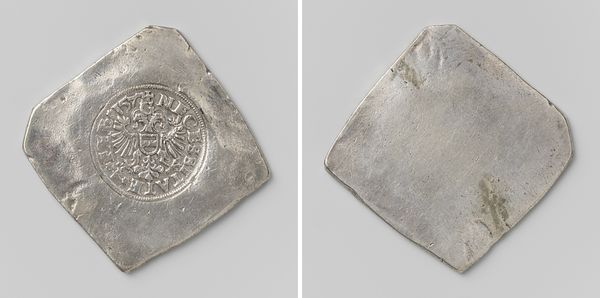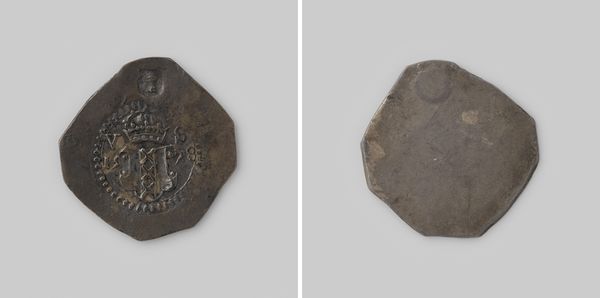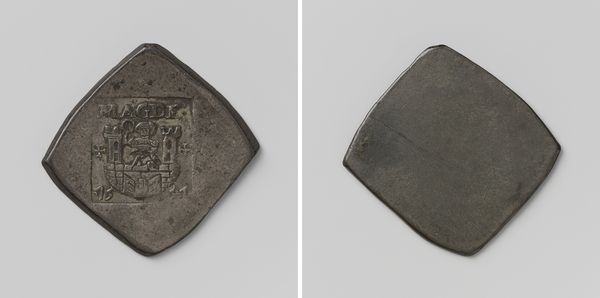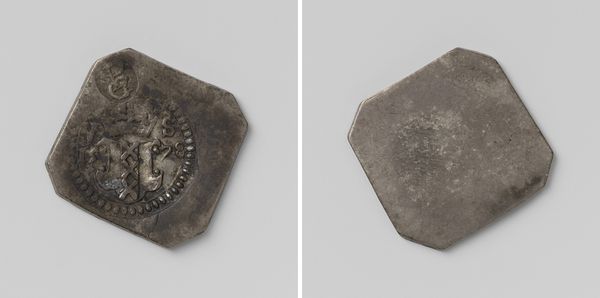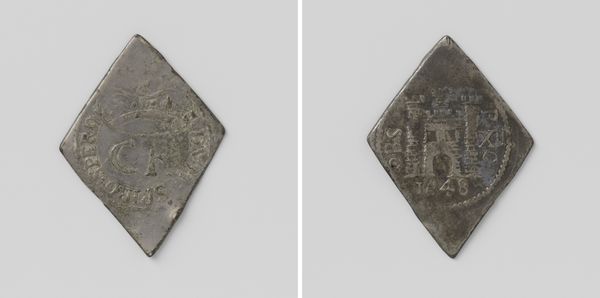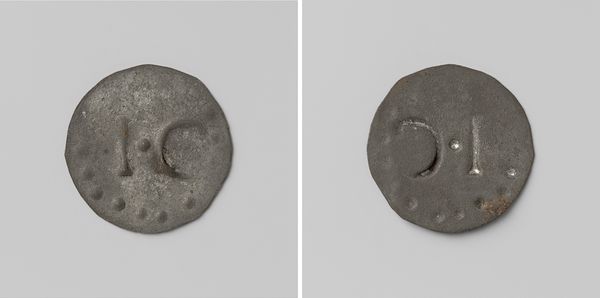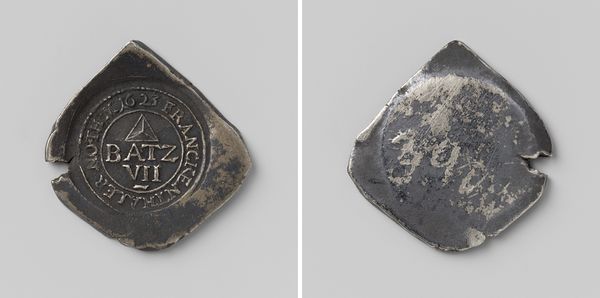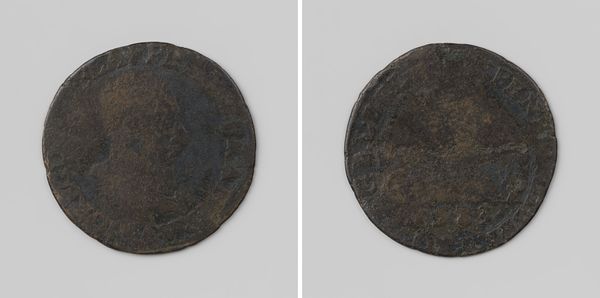
Vijf shilling, noodmunt van Karel I, koning van Engeland te Ormond geslagen van het door de ingezetenen opgebrachte zilver 1642 - 1648
0:00
0:00
silver, metal, engraving
#
medieval
#
silver
#
metal
#
history-painting
#
coin
#
engraving
Dimensions: height 4.3 cm, width 4.1 cm, weight 26.1 gr
Copyright: Rijks Museum: Open Domain
Editor: Here we have a five shilling coin, made of silver, dating back to the 1640s during the reign of Charles I. What strikes me is its irregular shape, and the almost crude nature of the engraving, compared to more modern currency. What do you read into this piece? Curator: It's a powerful object, isn't it? Its very existence speaks volumes about the sociopolitical landscape of the English Civil War. These weren't produced under normal royal authority; instead, local citizens literally "brought up" their silver, sacrificing personal wealth to support the King's cause, with these coins minted in places like Ormond. This coin isn’t just currency; it’s a testament to desperate loyalty and resourcefulness born out of conflict. Editor: So, its form reflects its function at that time? The crudeness almost representing instability? Curator: Exactly! Think about the power dynamics at play. Who held the power to mint currency, and what did it mean when that power was decentralized, even contested? It is a powerful and contested symbol. Does the imagery evoke any further questions for you regarding issues such as identity, gender, and power? Editor: The lack of the typical royal iconography makes it less about the King as a divine figure and more about...the sheer act of survival and governance. But how did gender come into it? Curator: How did women experience the economic and political upheaval? The civil war profoundly affected them, as heads of households, managing properties while men were away fighting, but are less visible in official narratives around this currency. Exploring alternative accounts through women's diaries and letters of the time, for instance, might reveal the cost. Editor: I see. So even something as small as a coin opens up wider narratives of power, identity and resilience within a historical moment. Thanks for illuminating that for me. Curator: Indeed, art serves as a potent entry point into dialogues about the complex social conditions under which they are created and consumed.
Comments
No comments
Be the first to comment and join the conversation on the ultimate creative platform.
